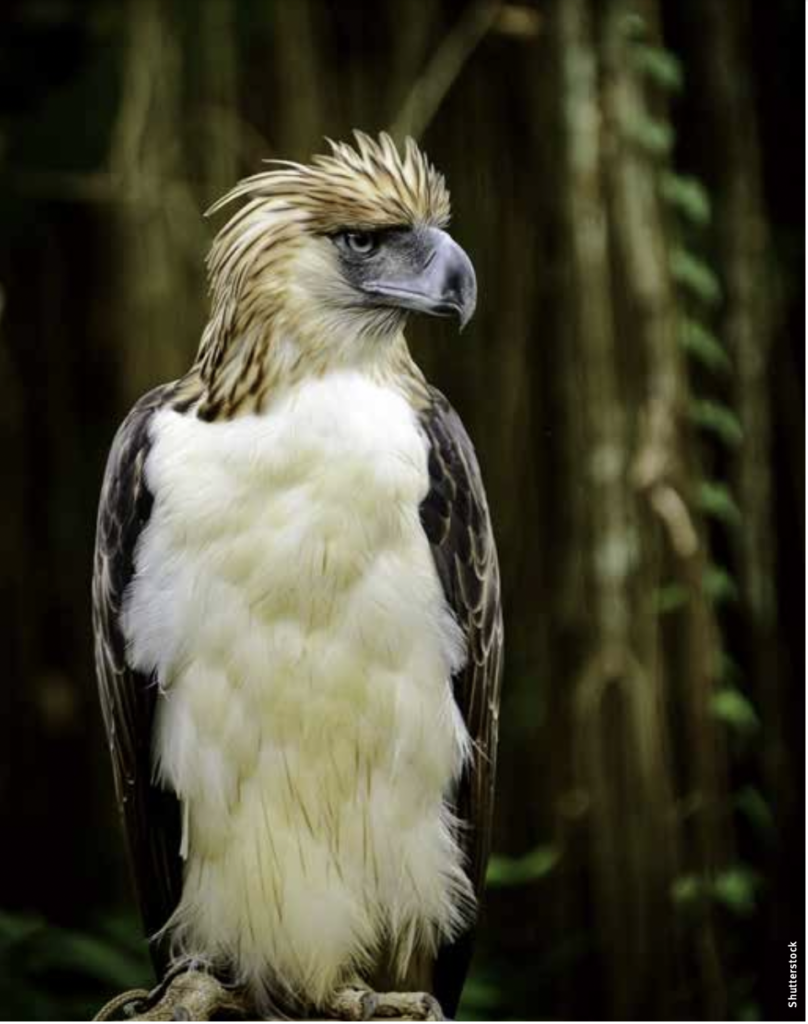The national bird of the Philippines is under threat of extinction from deforestation and human persecution
Standing a metre tall, with a wingspan of well over two metres, the Philippine eagle – the iconic apex predator that serves as the archipelagic country’s national bird – is the largest eagle on the planet in terms of length and wing surface area. While this formidable raptor is believed to reside exclusively on four major islands – Luzon, Samar, Leyte, and Mindanao – we don’t yet know the true extent of the eagle’s range and its numbers in the wild. But new research published in the journal Animal Conservation aims to change that.
In the February 2023 study, researchers from non-profit organisations The Peregrine Fund and the Philippine Eagle Foundation identified a total of 2.86 million hectares of forest habitat suitable for the Philippine eagle, which they estimate hosts 392 breeding pairs. That’s good news: The new figure is higher than previous estimates of 340 pairs in 2018 and just 88 to 221 pairs in 1989.
The scientists used satellite images, decades of georeferenced nest locations, and data from citizen scientists to model the Philippine eagle’s area of habitat and favoured land cover type. The eagles appear to hunt and nest in forests that have dense, healthy green plant biomass, very large old-growth trees, and multi-layered canopy cover. Home range size requirements observed in breeding adults fitted with satellite tracking tags were used to estimate the population.

In a statement, Luke Sutton, the paper’s lead author and a post-doctoral research fellow at The Peregrine Fund in Boise, Idaho, USA, said: “Understanding how species are distributed and a reliable estimate of population size are key biological parameters for any threatened species. Establishing baseline estimates for both of these parameters is critical for directing conservation planning for at-risk endemic species like the Philippine eagle.”
The model predicted that the suitable habitat on the southern island of Mindanao, 1.7 million hectares, could potentially support around 233 breeding pairs. The largest island of Luzon,with 935,000 hectares of available habitat, was predicted to be able to support approximately 128 pairs. Finally, the Eastern Visayas cluster of islands, with 224,000 hectares of habitat, could support roughly 31 pairs.
According to the research, several mountain ranges within the four major islands have been identified as priority conservation areas. With the current Philippine protected area network covering only 32 percent of the suitable eagle habitats, the goal must now be to find as many of the eagle pairs as possible, and designate their nesting sites as either strict protection zones or habitat management zones.
DESCRIPTION
The Philippine eagle has brown and white-coloured plumage; a shaggy crest; A LARGE, PROMINENT, HIGH-ARCHED, BLUISH-GREY BEAK; AND BLUE-GREY EYES.
It weighs between 4-8KG and has an AVERAGE LENGTH OF 95CM for males and 105CM FOR FEMALES, making it the longest extant species of eagle.
The scientists also stress that wildlife and forest law enforcement efforts require more funding. Shockingly, these spectacular birds, the most vulnerable juveniles in particular, are being illegally hunted, and the researchers say there should be local bans on airguns, improvised firearms and illegal firearms to help mitigate this threat.
By conducting systematic nest surveys, protecting threatened eagle nesting sites, and ensuring the reproductive success and survival of each adult pair and each of their young, it may just be possible to pull this keystone, and critically endangered, species from the brink of extinction. • AG
For more stories from this issue, get a copy of Asian Geographic No.159 or subscribe at https://shop.asiangeo.com